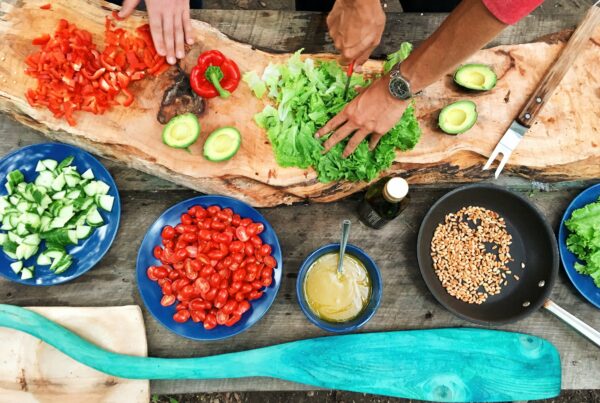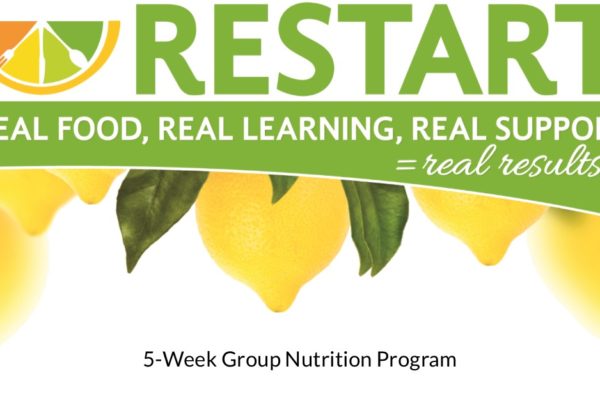 “To a great extent we are physically what we eat… What needs additional emphasis are the positive aspects – the need for vegetables, fruits, and grains, particularly wheat. In most cases, the closer these can be, when eaten, to their natural state, without over refinement and processing, the healthier we will be. To a significant degree, we are an overfed and undernourished nation, digging an early grave with our teeth, and lacking the energy that could be ours because we overindulge in junk foods… We need a generation of young people who, as Daniel, eat in a more healthy manner than to fare the ‘king’s meat’ – and whose countenances show it.” Teachings of Ezra T. Benson, pg. 476-477
“To a great extent we are physically what we eat… What needs additional emphasis are the positive aspects – the need for vegetables, fruits, and grains, particularly wheat. In most cases, the closer these can be, when eaten, to their natural state, without over refinement and processing, the healthier we will be. To a significant degree, we are an overfed and undernourished nation, digging an early grave with our teeth, and lacking the energy that could be ours because we overindulge in junk foods… We need a generation of young people who, as Daniel, eat in a more healthy manner than to fare the ‘king’s meat’ – and whose countenances show it.” Teachings of Ezra T. Benson, pg. 476-477
I love this quote! President Benson repeated this concept many times throughout his life and it is never more true than it is today. Most of us understand the negative consequences of indulging in tobacco or alcohol or coffee, but do we understand the consequences of NOT consuming enough fruits and vegetables? And do we understand the importance of eating fruits and vegetables “in season”?
First, let’s look at the benefits of eating fruits and vegetables.
Within our body, there are naturally occuring free radicals. Free radicals occur as part of our metabolic process and as part of our immune system process as the body fights viruses and bacteria. However, free radicals also occur as a result of environmental conditions & diet such as: pollution, radiation, cigarette smoke, herbicides, etc. Excess free radicals in our cells can attack cell membranes causing cell and tissue damage.
Since free radicals occur naturally, our body is designed to neutralize them through antioxidants found in fruits and vegetables. However, if the body doesn’t have enough antioxidants, the free radicals can cause cell and tissue damage, can break strands of DNA, and have been linked to chemicals known to cause cancer and to the development of diseases such as Parkinson’s disease.
As if that weren’t enough, antioxidants in fruits and vegetables have been shown to slow down the aging process of your cells. Fruits and vegetables are also full of the important vitamins and nutrients we need for optimal health and function and that help our bodies fight infection and inflammation. AND Phytonutrients, the chemicals that help plants defend against environmental damage from pests or ultraviolet light, appear to provide humans with protection as well. For example, cruciferous vegetables – broccoli, cabbage brussel sprouts, kale, collard greens, cauliflower, bok choy, turnip, etc. – are major sources of phytochemicals and can reduce the risk of developing bladder and other cancers. (Keep in mind that you’ll want to cook cruciferous vegetables because they have thyroid suppressing properties.) Tomatoes, which contain a phytochemical called lycopene, provide protection from prostate and other cancers.
Obviously, there are great benefits to fruits and vegetables. But are there benefits to eating them “in the season thereof?”
Well, when you buy fruits and vegetables that are not in season, they are picked while still immature to avoid spoilage in shipping, which not only affects the taste but causes vitamin degradation and nutrient loss. In fact, researchers from the Austrian Consumers Association have confirmed that vegetables picked and frozen while in season are actually higher in nutrients than the same ones that were transported off season from abroad!
In addition to being more nutrient dense, the fruits and vegetables that grow in a particular season contain exactly the nutrients our body needs at that particular time.
For example, Spring vegetables such as leafy greens like dandelion, spinach, kale, swiss chard, or romaine lettuce aid in cleansing the blood to help you renew your body’s vibrancy after a long winter. The spring greens, tender vegetables, certain types of berries, and fruits are full of the various types of minerals, salts, and vitamins that we need to thin down and build up the blood stream for spring use.
In the summer our bodies need to withstand the heat, so we have melons, vegetables, fruits, and herbs with the salts, minerals, and vitamins that are suitable for the summer season.
In the fall and winter we need to eat foods that warm us. The fall food has just the right amount of minerals, salts, and vitamins needed to prepare our bloodstream for the cold winter. This is the time when firmer types of apples ripen, firmer pears, tubers and starchy vegetables are in abundance. Dense, nutrient and antioxidant-rich foods like onions, garlic, squash, turnips, potatoes and carrots help keep us warm and protect us against illness. These vegetables are also easy to store in root cellars for use during the cold winter months.
Dr. John R. Christopher talks about the need for eating foods “in the season thereof” in his book, Just What Is the Word of Wisdom. He says,
“If we are living in the artic zone we find that the winters are long, and we have to live on what the Lord provides for us at that time. There is no vegetable life in some sections that could be used in the winter at all. They eat the fat of the water animals and the flesh and fat of land animals. This gives them warmth and heat to their bodies. Using the other extreme, let us go down into the torrid zone in the dense jungle. The intense heat necessitates the use of cooling fruits, and the natives of that section live on these cooling fruits and herbs to keep their blood stream in a fast flowing , clean channel, and to keep the body cool with the salts that are in them.
“If you were to change the diet of these people from what the Lord has given them, in their climatic location, to eat, it would be very harmful to them. Supposing you were to take away from the Eskimo his heavy food, the blubber and blood heating foods, and give him a diet of tropical, or even temperate zone fruits and food. It would thin down his blood stream to the consistency of a tropical blood stream, and being in a frigid zone it would be just as fatal as it would be to take off his furs and put him into a palm beach suit. It would kill him. The same is true with feeding the frigid zone diet to the native of the jungle – it would be just as harmful to him. It would thicken his blood stream to such an extent that he would be sluggish and unable to combat the heat and the disease, and like putting heavy furs on him, it would kill him of heat prostration very quickly. I have shown you the two extremes here for the special purpose of clearly giving you the picture of food in its season.”
So, it’s July 1. What exactly are the fruits and vegetables that are “in season?”
Summer vegetables that are readily available include: broccoli, beans, garlic, fennel, lettuce and salad leaves, radishes, cucumber, salad onions, new potatoes, fresh peas, beet root, carrots, tomatoes, watercress, sorrel, corn, zucchini, eggplant, and summer squash.
Summer fruits that are easy to find include: blackberries, raspberries, blueberries, peaches, plums, watermelon, currants, loganberries, strawberries, cherries, grapes, apple, cantaloupe, and nectarines.
This week, as you prepare you menu, try to include ONLY those fruits and vegetables that are in season in your area. A good way to do this is to join your local CSA or visit your local Farmer’s Market. By joining a CSA or visiting your area farmer’s market, you can enjoy the wide variety of bright colors and fresh smells you’ll encounter from fruits and vegetables in season – knowing they’ve been picked just for you!









